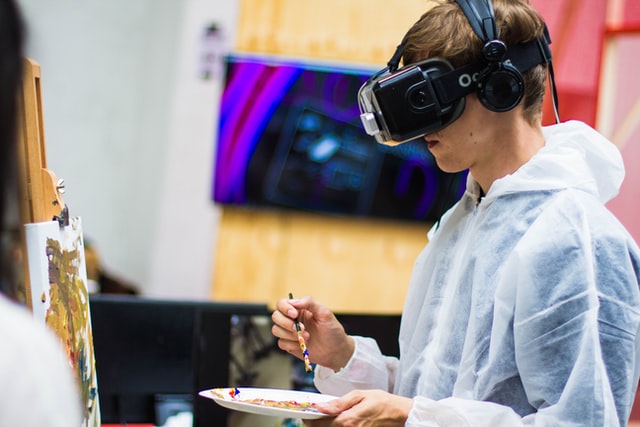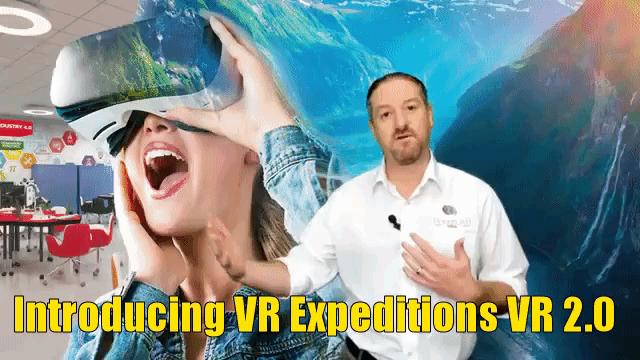By Arthur Evans
 Photo by Billetto Editorial on Unsplash
Photo by Billetto Editorial on Unsplash
Virtual reality (VR) has changed life as we know it. It has also affected the dynamics of education. VR has opened the world’s educational system to a vast horizon of possibilities. Working hand in hand with artificial intelligence (AI) and augmented reality (AR), it has taken education to a whole new level.
Virtual reality brings the world to the students in the classroom. Students can visit and experience the place they’ve never even dreamed of, from the depths of the oceans to the heights of space. Several institutions are already using this technology to enable a more interesting, interactive, and explorative learning environment. It is already closing the gap between the varying ways and the pace students at which students learn.
Here are five great ways that universities and students are effectively using virtual reality across the educational system.
Virtual Excursions and Tours
Virtual excursions are one of the most widely known uses of VR technology in education. A lot of schools have started using kits like RobotLAB VR Expeditions 2.0 to take students to different corners of the globe, even to places that are normally inaccessible.
With these kits, you can bring the entire world into your lecture hall. Students can go on several excursions and explore different histories, cultures, and people. This ensures that students look towards every lesson with excitement and the willingness to learn in a more fun way.
Remote and Distance Learning with VR
The possibilities that virtual reality brings to distance learning are endless. Prior to VR technology, it was no secret that distance learning wasn't always the best form of learning due to issues concerning proper interaction with lecturers and supervisors.
However, virtual reality has solved this problem to a great extent. It has improved the learning experience for distance learning students. Institutions like the University of British Columbia and Stanford School of Business already have courses that offer VR programs to distance learning students.
The need for the use of such technology has also skyrocketed over the past year as a result of the Covid 19 pandemic. In this time of lockdowns and social distancing, virtual reality has become essential for remote work, not only in education but in every sector.
Training
VR technology offers a much safer way for students to learn in realistic situations. It takes away the fear of doing something unfamiliar with possible real-life consequences. VR gives students the chance to experiment in a controlled realistic scenario, so they can practice and hone their skills without failure. This is very beneficial to the medical education system, as medical students can be guided through anatomy and surgical procedures easily.
Research shows that students who were shown only how-to videos learned slower than those who were trained through virtual reality.
Learning through Games
Virtual reality has completely reinvented the way games are used for learning purposes. Game-based learning keeps students engaged and attentive, and with VR it has been taken up a notch.
In a study where knowledge of quadratic equations was put into a game, forty students who had never done such equations prior to that took pre-game and post-game tests. The results displayed notable improvement in knowledge and motivation to learn between the pre-game and post-game tests
Removes Language Barriers
It's normal to have students from different cultural backgrounds, especially at levels of higher education. In these cases, language barriers can pose a serious challenge, because some students may not be able to fully comprehend given assignments. There may even be an initial difficulty with materials given. Ultimately, this could affect their performances.
Several virtual reality software now has features for language translation built into them. This gives room to the possibility of lessons or lectures being done in any language. As a result, the language barrier will be removed and with it, the difficulties that learning in a language you don't fully understand may pose. Students could also leverage this to learn new languages and write an Easy Essay or two with their newfound knowledge.
The Bottom Line
Virtual reality has not only improved today’s educational system, but it has also revolutionized it. Virtual reality has forever changed education around the world. It allows student participate and express in ways were never before imagined.
More schools and universities need to adopt VR education. Virtual learning leads to greater understanding, improves recall of knowledge, and makes retention easier. This interactive and immersive teaching method increases the level of engagement and motivation shown by students. which are critical factors to reaching set goals.
VR presents a refreshing view on education and opens up a future of limitless innovations.
Discover more about VR with RobotLAB Expeditions 2.0
Author Bio:
 Arthur Evans is a highly skilled freelance writer and proofreader from the UK with years of experience under his belt. Being interested in everyday development, he writes various blog posts and discovers new aspects of human existence every day.
Arthur Evans is a highly skilled freelance writer and proofreader from the UK with years of experience under his belt. Being interested in everyday development, he writes various blog posts and discovers new aspects of human existence every day.



